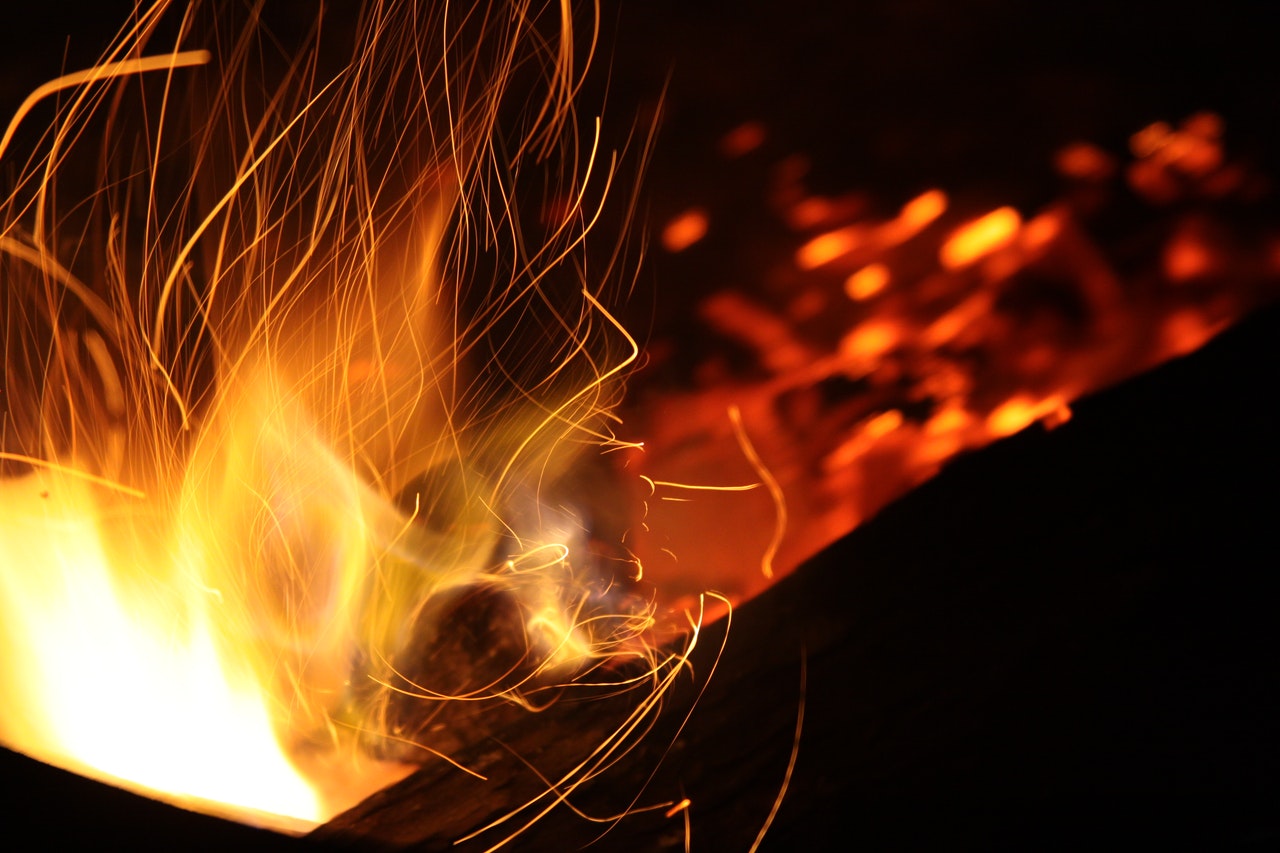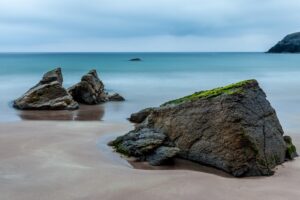Did you know that if you were to count all of the things in your room that weren’t made from a natural resource, you wouldn’t even get to number one? Everything on Earth depends on natural resources. Natural resources are the things that nature produces that allow us to survive. These include air, sunlight, water, soil, rocks, vegetation, fuels, and animals. All of these resources together help to create the diversity of life on Earth. All natural resources would exist without humans, and many of them existed long before humans populated the planet. We use them not only to keep us alive, but to keep us healthy and even happy. (If you never ate another vegetable again, you might stay alive, but you definitely wouldn’t be very healthy!) Our ability to use natural resources depends upon the health of the ecosystem that provides them. If one natural resource disappeared, it would affect the other resources negatively. If a region with lots of vegetation suddenly had no water, then all of the vegetation, land, animals, and air quality would change dramatically.
We use our natural resources in lots of direct and indirect ways. We use water in direct ways because we drink it. We use vegetation in direct ways because we eat it and use it to make tools and other goods. However, we also use water and vegetation in indirect ways. Natural resources are used indirectly because, for example, forests act as a filter for groundwater, a barrier for flood control, and a purifier for air. Natural resources are also used directly to manufacture products as raw materials.
What are raw materials?
Raw materials are any natural resources that we use to manufacture something. Wood from trees is a raw material. We use wood to build houses, make tools, and create other products like paper. Everything you own or use comes from a raw material – even plastic items. They come in a variety of forms, and they have to undergo different types of processing, but they were a natural resource originally. The different categories of raw materials include:
- Renewable Resources. These natural resources can be regenerated or regrown, which means that we can replace them when we use them. Renewable resources include vegetation and animals, and also wind, sunlight, and water. Vegetation and animals are considered organic renewable resources, while wind, sunlight, and water are considered inorganic resources.
- Non-Renewable Resources. These natural resources cannot be regenerated because they cannot grow or form within a viable timeframe and only exist in finite (limited) amounts. These include minerals, fossil fuels, which form over thousands of years. Like renewable resources, non-renewable resources are categorized as organic and inorganic. Fossil fuels originated from living things, so they are considered organic non-renewable resources. Soil compositions partially come from living matter, so they are also organic non-renewable resources. Minerals and rocks are inorganic non-renewable resources.
- Metallic and Non-metallic Resources. These are resources that either do or do not contain metals. Coal and clay are non-metallic non-renewable resources. Iron, aluminum, and gold are metallic inorganic resources.
Why are natural resources important?
Natural resources are important for human survival, but they are also incredibly important for the survival of every living thing on the planet. However, human beings use the overwhelming majority of natural resources, with populations in developed countries using more than populations in underdeveloped countries. We use the most natural resources for the following three categories of products:
- Food, beverages, and food packaging. Food and beverages require a lot of natural resources due to the fact that the category includes materials used for packaging, plates, forks, knives, cups, packaging, and storage containers, as well as the fruits, vegetables, and meats we actually eat, and the energy and appliances used for cooking and preservation.
- Transportation. Cars, trucks, motorcycles, boats, trains, and airplanes require a tremendous volume of natural resources. This includes the materials used to manufacture the vehicles, boats, and planes, and also the fuel used to power them.
- Commercial and residential property. All the houses and apartments where people live, as well as all of the buildings where people work require construction materials and furnishings. They also use a lot of energy for power, heating, and cooling.
Why we must protect our natural resources.
Although many of our natural resources are renewable, we use a lot of non-renewable resources to harvest them. This creates a considerable amount of environmental damage, including carbon dioxide emissions that contribute to climate change, water pollution, deforestation, land erosion, and air pollution. All of these environmental problems reduce the amount of natural resources we can access, which threatens the health and safety of the population in the following ways:
- Reduces the diversity of plants and animals in our forests. Biodiversity is essential to the preservation of our ecosystems. Without the right balance of native plants and animals, our forests can die out, because even a minor change in nature can create a chain reaction that harms the entire environment. For example, if we cut down too many trees in a forest, the animals that rely upon those trees for shelter will die off or move elsewhere. This might mean that the population of insects that were eaten by those animals will increase tremendously. The insects will then eat the leaves of all of the plants on the forest floor, killing them and causing them to dry out. This makes the forest more susceptible to fires, which can spread quickly to towns and neighborhoods. So, even though we might not think one species of plants or animals makes much of a difference, it’s important to make sure we don’t disrupt the natural order.
- Climate change can make regions uninhabitable. Even two degrees Celsius can make some parts of the world too hot for plants, animals, and humans to live.
- Populations start fighting over the remaining natural resources. When people stop being able to access water, for example, they start getting into conflicts over territory. This can make places very dangerous to live in, and these conflicts can spread across countries as people try to escape the fighting.
To make sure we don’t endanger the planet and have enough natural resources for everyone, we have to be vigilant about preserving our ecosystems. We can help make sure we don’t over consume resources in the following ways:
- Recycle plastics, glass, metal, batteries, and electronics in the proper way. (Contact your local sanitation department to find out how to recycle things like old phones and digital devices.)
- Reuse and repair items rather than throwing them away.
- Use less water by taking shorter showers (or baths instead) and using water conserving faucets.
- Purchase food that doesn’t come in packaging, like loose vegetables and fruits, whenever possible.
- Walk or ride a bicycle instead of driving or using public transportation.
- Help plant trees!
Forest Founders was started to help restore, preserve and protect our forest lands while raising awareness of diverse environmental issues. Through the support of climate-friendly practices and environmental education initiatives, Forest Founders is committed to achieving the goal of reversing climate change and creating a healthier and more harmonious world for this and future generations. Deforestation is one of the most environmentally damaging human activities because it removes nature’s best weapon against climate change. To learn how you can participate in Forest Founders’ mission, please visit our information page.
Renewable Resources: Natural resources that either regrow or regenerate quickly. These include plants and animals, sunlight, air, and water.
Organic Renewable Resources: Resources that grow or reproduce, such as plants and animals. However, it is important to adopt sustainable practices for harvesting plants and hunting animals, since both can be rendered extinct.
Inorganic Renewable Resources: Resources that regenerate, but are not living things, such as wind, sun, and water.
Non-Renewable Resources: Natural resources that do not grow or regenerate within a practical time-frame (a human lifespan), such as rocks, soils, and fossil fuels. These exist in limited amounts and can be exhausted with aggressive harvesting.
Organic Non-Renewable Resources: Non-renewable resources that formed from living matter, like fossil fuels and soils.
Inorganic Non-Renewable Resources: Non-renewable resources that are not formed from living matter, like rocks and minerals.
Metallic Resources: Metallic resources are non-renewable metal ores, such as iron, copper, aluminum, and gold.
Non-Metallic Resources: Non-metallic, non-renewable resources like clay and coal, from which no metal ore can be sourced.




